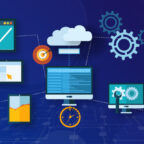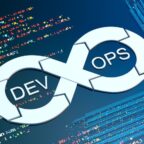Last updated on October 15th, 2022 at 07:18 pm
Companies acquire enterprise SaaS applications (such as Microsoft Dynamics, Salesforce, ServiceNow, or Workday) to accelerate business capabilities. However, the complexity increases as businesses begin to customize and integrate solutions to suit their business requirements. So, the cost of overlooking testing the application can be catastrophic in the form of monetary and reputational damage. ERP software testing helps to identify and resolve issues surrounding the operation of the system at each stage of its implementation. An ongoing testing and quality needs must be built into the implementation life cycle to guarantee continued satisfaction and business confidence. This includes the demand for a variety of business scenarios and the fine-tuning and testing of extensions in stressful situations. The scope of testing is depended on the application, its nature of data, and business usability & scalability.
To reduce the burden of testing –
- Keep customization, configuration and integrations to the minimum
- Ensure effective change management and governance
- Take advantage of SLAs offered by the vendor
- Test early
Managing change –
- Use APIs for integration testing to retain the value gained by integration
- Ensure integrity of data through data migration testing
- Rely on automated testing to the maintenance performance and security of the application
- Use unit testing to manage customization and extensions
- Testers quick feedback to the team in charge of customization and integration
- Be aware of the update/upgrade cycle provided by the vendor
Focus on –
- Testing areas of most risk or change, be it functional or non-functional
- Canary releases to reduce the risk
- Quicker delivery of test results
- Using visual QA to validate UI on browsers and devices
| Technology Category | Use Cases | Example Vendors and Technologies |
|---|---|---|
| Analysis Tools for Static, Impact, and Configuration | Review configurations and code for insight into technical debt and to provide testers with focus. |
|
| Test Management | Utilize traceability, communication integrations and reporting facilities to notify teams on software quality. |
|
| Functional Test Automation | Validate that specific features, scenarios or end-to-end business processes operate as expected. |
|
| Test Data Management | Provision of properly shaped and securely provisioned test data to accurately reflect production data. |
|
| API Testing | Leverage API design and production artefacts to accelerate mocking, and functional and performance testing. |
|
| Visual Assertions | Visual assertion technology validates the user interface layout, colours, fonts, text and functional outcomes of applications. |
|
| Continuous Integration (CI)/Continuous Delivery (CD) and Feature Management | For teams that are building custom applications and experiences on their enterprise application platforms, CI/CD and release tools can orchestrate the common building, testing and release management tasks. |
|
Anish is a business and marketing leader driving growth and performance at Testhouse – A Software Testing, Quality Assurance & DevOps Company. He has years of experience driving business in very diverse environments and geographies and has a passion for technology solutions.



